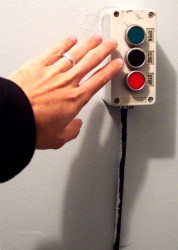Human Factors is a broad branch of science which is concerned with man’s interaction with his universe, and is closely related to safety and engineering. These topics are not simply the study of a pure science (like physics), but rather involve man’s understanding and reactions (i.e. what is heard, seen, and perceived). Similarly, a person’s perception and reaction to warnings (such as flashing lights, buzzers, alarms, and warnings and instructions) topics in human factors that are commonly encountered in accident or injury investigation. In addition, the ability to perform tasks under various environmental conditions is also of concern.
Our engineers are able to use their background and experience in human factors to investigate product safety and warning adequacy for products liability cases, as well as driver reaction time in motor vehicle accidents.
Our engineers have been assisting attorneys and insurance representatives in investigating accidents since 1990. We have a highly qualified staff of engineers with advanced degrees from top-tier universities who have provided testimony on behalf of both plaintiffs and defendants at trial


